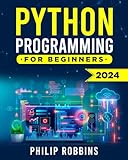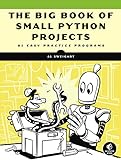You can get the index of elements inside a lambda function in pandas by using the reset_index() function along with the apply() method. First, you need to reset the index of the DataFrame using reset_index(). Then, you can use a lambda function with the apply() method to access the index of each element. This will allow you to perform operations on the index values within the lambda function.
How to handle multi-level indexes within a lambda function in pandas?
To handle multi-level indexes within a lambda function in pandas, you can use the apply method along with a lambda function that works with the multi-level index. Here is an example of how you can handle multi-level indexes within a lambda function:
1 2 3 4 5 6 7 8 9 10 11 |
import pandas as pd # Create a multi-level indexed DataFrame arrays = [['A', 'A', 'B', 'B'], [1, 2, 1, 2]] index = pd.MultiIndex.from_arrays(arrays, names=('first', 'second')) df = pd.DataFrame({'data': [1, 2, 3, 4]}, index=index) # Define a lambda function to handle the multi-level index result = df.groupby(level='first').apply(lambda x: x['data'].sum()) print(result) |
In this example, we group the DataFrame df by the first level of the multi-level index and then use a lambda function within the apply method to calculate the sum of the data column for each group. The result will be a Series with the sum of the data column for each group based on the first level of the multi-level index.
How to calculate the percentage change of elements within specific index groups using a lambda function in pandas?
To calculate the percentage change of elements within specific index groups using a lambda function in pandas, you can use the groupby function along with the apply function to apply a lambda function to each group.
Here is an example code snippet to demonstrate this:
1 2 3 4 5 6 7 8 9 10 11 12 13 14 |
import pandas as pd # Create a sample dataframe data = {'group': ['A', 'A', 'B', 'B', 'A', 'B', 'A', 'B'], 'value': [10, 15, 20, 25, 30, 35, 40, 45]} df = pd.DataFrame(data) # Define a lambda function to calculate the percentage change percentage_change = lambda x: x.pct_change() # Apply the lambda function to each group df['percentage_change'] = df.groupby('group')['value'].apply(percentage_change) print(df) |
In this code snippet, we first created a sample dataframe with two columns: 'group' and 'value'. We then defined a lambda function percentage_change that calculates the percentage change using the pct_change method. Finally, we applied this lambda function to each group in the 'group' column using the groupby function and the apply function, and stored the result in a new column 'percentage_change'.
After running this code snippet, you will see the original dataframe along with the calculated percentage change for each group in the 'percentage_change' column.
How to get the row and column index of a specific element in a pandas DataFrame using a lambda function?
To get the row and column index of a specific element in a pandas DataFrame using a lambda function, you can use the apply method with a lambda function that returns the row and column index of the element.
Here's an example:
1 2 3 4 5 6 7 8 9 10 11 12 13 14 15 16 17 18 19 |
import pandas as pd # Create a sample DataFrame data = {'A': [1, 2, 3], 'B': [4, 5, 6], 'C': [7, 8, 9]} df = pd.DataFrame(data) # Define the element you want to find element = 5 # Use the apply method with a lambda function to find the row and column index result = df.apply(lambda x: x[x == element].index.tolist()[0], axis=1) row_index = result[result.notnull()].index[0] column_index = result[result.notnull()].values[0] print("Row Index:", row_index) print("Column Index:", column_index) |
In this example, we create a sample DataFrame and define the element we want to find. We then use the apply method with a lambda function that returns the index of the element in each row. Finally, we extract the row and column index from the result.
How to count the occurrence of specific elements within each index group in a pandas DataFrame using a lambda function?
To count the occurrence of specific elements within each index group in a pandas DataFrame using a lambda function, you can use the groupby() function along with the apply() function. Here's an example:
1 2 3 4 5 6 7 8 9 10 11 12 13 14 |
import pandas as pd # Create a sample DataFrame data = {'Group': ['A', 'A', 'B', 'B', 'B', 'C', 'C'], 'Element': ['X', 'Y', 'X', 'Y', 'Z', 'Y', 'Z']} df = pd.DataFrame(data) # Define a lambda function to count occurrences of specific elements count_occurrences = lambda x: x.value_counts() # Group by 'Group' column and apply the lambda function to count occurrences of specific elements result = df.groupby('Group')['Element'].apply(count_occurrences).unstack() print(result) |
This will output a DataFrame where each row represents a different group and each column represents a specific element. The values in the DataFrame represent the count of occurrences of each element within each group.
How to get the index of elements inside a lambda function in pandas?
In order to get the index of elements inside a lambda function in pandas, you can use the enumerate function along with the lambda function. Here is an example to illustrate how this can be done:
1 2 3 4 5 6 7 8 9 10 11 12 |
import pandas as pd # Create a sample DataFrame df = pd.DataFrame({ 'A': [1, 2, 3, 4], 'B': [5, 6, 7, 8] }) # Use a lambda function to access the index of each element in column 'A' df['index_A'] = df['A'].apply(lambda x: [*enumerate(x)][0][0]) print(df) |
In this example, the lambda function is used with the apply method to iterate over each element in column 'A' and get its index using the enumerate function. The index is then stored in a new column 'index_A'. You can modify this example as needed to suit your specific requirements.









